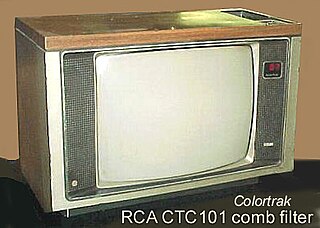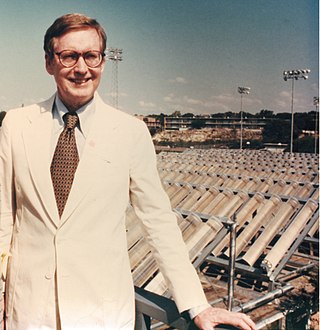An extended warranty, sometimes called a service agreement, a service contract, or a maintenance agreement, is a prolonged warranty offered to consumers in addition to the standard warranty on new items. The extended warranty may be offered by the warranty administrator, the retailer or the manufacturer. Extended warranties cost extra and for a percentage of the item's retail price. Some extended warranties that are purchased for multiple years state in writing that during the first year, the consumer must still deal with the manufacturer in the occurrence of malfunction. Thus, what is often promoted as a five-year extended guarantee, for example, is actually only a four-year guarantee.
In law, a warranty is an expressed or implied promise or assurance of some kind. The term's meaning varies across legal subjects. In property law, it refers to a covenant by the grantor of a deed. In insurance law, it refers to a promise by the purchaser of an insurance about the thing or person to be insured.
Zenith Electronics, LLC, is an American research and development company that develops ATSC and digital rights management technologies. It is owned by the South Korean company LG Electronics. Zenith was previously an American brand of consumer electronics, a manufacturer of radio and television receivers and other consumer electronics, and was headquartered in Glenview, Illinois. After a series of layoffs, the consolidated headquarters moved to Lincolnshire, Illinois. For many years, their famous slogan was "The quality goes in before the name goes on". LG Electronics acquired a controlling share of Zenith in 1995; Zenith became a wholly owned subsidiary in 1999. Zenith was the inventor of subscription television and the modern remote control, and was the first to develop high-definition television (HDTV) in North America.
Craftsman is a line of tools, lawn and garden equipment, and work wear. Originally a house brand established by Sears, the brand is now owned by Stanley Black & Decker.
White-Westinghouse is an American home appliance brand used under license by trademark owner Westinghouse Licensing Corporation. It was created in 1975 when White Consolidated Industries bought the Westinghouse Electric Corporation's major appliance business. White Consolidated Industries was in turn acquired by Electrolux in 1986.
Lafayette Radio Electronics Corporation was an American radio and electronics manufacturer and retailer from approximately 1931 to 1981, headquartered in Syosset, New York, a Long Island suburb of New York City. The company sold radio sets, Amateur radio (Ham) equipment, citizens band (CB) radios and related communications equipment, electronic components, microphones, public address systems, and tools through their company owned and branded chain of retail outlets and by mail-order.
Durabrand is a private label tradename of Walmart, which was introduced in early 1999. It was previously available in the UK through ASDA as a replacement for the Pacific brand name.

Colortrak was a trademark used on several RCA color televisions beginning in the 1970s and lasting into the 1990s. After RCA was acquired by General Electric in 1986, GE began marketing sets identical to those from RCA. GE sold both RCA and GE consumer electronics lines to Thomson SA in 1988. RCA televisions with the Colortrak branding were mid-range models; positioned above the low-end XL-100 series but below the high-end Dimensia and Colortrak 2000 series. RCA discontinued the Colortrak name in the late 1990s, with newer models badged as the Entertainment Series.
Quasar is an American brand of electronics, first used by Motorola in 1967 for a model line of transistorized color televisions. These TVs were marketed as containing all serviceable parts in a drawer beside the picture tube. It was then established as a subsidiary brand, with all Motorola-manufactured televisions being sold as Quasar by Motorola. In 1974, Motorola sold its television business to Matsushita Electric, now Panasonic, which continued producing and marketing televisions under the Quasar brand until 2005. In 2013, Panasonic re-registered the Quasar trademark.
Philco is an American electronics manufacturer headquartered in Philadelphia. Philco was a pioneer in battery, radio, and television production. In 1961, the company was purchased by Ford and, from 1966, renamed "Philco-Ford". Ford sold the company to GTE in 1974, and it was purchased by Philips in 1981. In North America, the Philco brand is owned by Philips. In other markets, the Philco International brand is owned by Electrolux.

USDTV, an acronym for U.S. Digital Television, was an over-the-air, pay television service in the United States. Based in Draper, Utah near Salt Lake City, it was founded in 2003 and started service there in 2004. The company ceased operations March 12, 2007.

Bush is a British consumer electronics brand owned by J Sainsbury plc (Sainsbury's), the parent company of the retailer Argos. The former Bush company is one of the most famous manufacturers of early British radios. The company is now defunct, but the Bush brand name survives as a private label brand for budget electronics. Today, all Bush are sold exclusively at Argos and Sainsbury's, with Argos having a wider selection.

Coby Electronics Corporation is an American manufacturer of consumer electronics products headquartered in Lake Success, New York, with offices and factories around the world. With the joint efforts of Coby Electronics Co. of Hong Kong and Coby Electronics Corp. of the United States, the products reached consumers in Asia, North America, South America and Europe; however, the company mostly sold in Europe and the United States. Coby also served as an OEM manufacturer for brands including Samsung, NEC, RadioShack's Presidian brand and Hyundai. Its products are still available today.

Fisher Electronics was an American company specialising in the field of hi-fi electronics. The company and the name was bought by Japanese electronics conglomerate Sanyo in 1975.

The National Radio Institute-McGraw Hill Continuing Education Center was a private, postsecondary, for-profit correspondence school based in Washington, D.C., from 1914 to 2002. The school originally trained students to become radio operators and technicians.. NRI conducted training courses via mailed lessons, a form of asynchronous learning. NRI's initial home-study course offerings were in radio repair, as well as radio telegraphy & telephony. These courses were designed to be comprehensive, covering all facets of radio technology, including radio operation, broadcasting, manufacturing, sales, and service. An F.C.C. license exam preparation course was implemented and, in time, more courses were added for students to become tradesmen in the broader field of electronic equipment servicing, including TV/VCR repair, basic electronics, automation & control systems, avionic & marine communication systems, and even a very early computer technology course in 1971.. Eventually, NRI implemented courses in electric appliance repair, automotive mechanics, small engine repair, building construction, home inspection, air conditioning, refrigeration, heating & solar technology, computer repair, locksmithing, as well as bookkeeping and accounting. Nevertheless, radio-television electronics remained the company's most prominent division. NRI was America's oldest and largest home-study radio-television-electronics school, a claim that the school frequently advertised. The school was also an accredited member of the National Home Study Council, now known as the Distance Education Accrediting Commission.
Carad was a brand of the Ets. G.L. Carpentier, a small Belgian electronics manufacturer located in Kuurne, near Kortrijk. It existed from 1925 to 1975. At the height of its activities around 1970, the company employed about 400 people.

Leonard "Lynn" L. Northrup Jr. was an American engineer who was a pioneer of the commercialization of solar thermal energy. Influenced by the work of John Yellott, Maria Telkes, and Harry Tabor, Northrup's company designed, patented, developed and manufactured some of the first commercial solar water heaters, solar concentrators, solar-powered air conditioning systems, solar power towers and photovoltaic thermal hybrid systems in the United States. The company he founded became part of ARCO Solar, which in turn became BP Solar, which became the largest solar energy company in the world. Northrup was a prolific inventor with 14 US patents.

Real Digital was the brand name for a digital satellite television and radio service in the United Kingdom which was transmitted from SES S.A.'s Astra satellites located at 28.2° east and Eutelsat's 28A satellite at 28.5°E. Real Digital had planned to launch in Ireland. The service ceased transmitting on 31 March 2012 to "undergo essential maintenance work", and promised to return in approximately seven days. On 26 April 2013, David Henry informed The Guardian that the service intended to launch in the autumn.As of January 2015, the service had not launched. The company was dissolved in September 2018.

Majestic Radios was an American radio brand from 1927 to 1955, trademarked as "The Mighty Monarchs of the Air". Noted for their high quality, they were initially manufactured by the Grigsby-Grunow Company of Chicago. After Grigsby-Grunow's demise in 1934 during the Great Depression, Majestic Radios continued to be made through subsequent corporate ownership changes and reorganizations for another twenty-two years. The Majestic Radio & Television Corporation was formed to produce the radios in the 1930s and 1940s. Following Majestic Radio & Television's liquidation in 1949, Majestic-brand radios were made by a division of the Wilcox-Gay Corporation at their Michigan factory in the 1950s.

Kenmore is an American brand of household appliances, cookware, floorcare, grills, HVAC equipment and other home items owned and licensed by Transformco, an affiliate of ESL Investments. Previously they were a subsidiary brand of Sears Holdings, but after Sears Holdings filed for Chapter 11 bankruptcy on October 15, 2018 they were acquired by Transformco, formed in 2019 after acquiring the assets of Sears Holdings Corporation.











